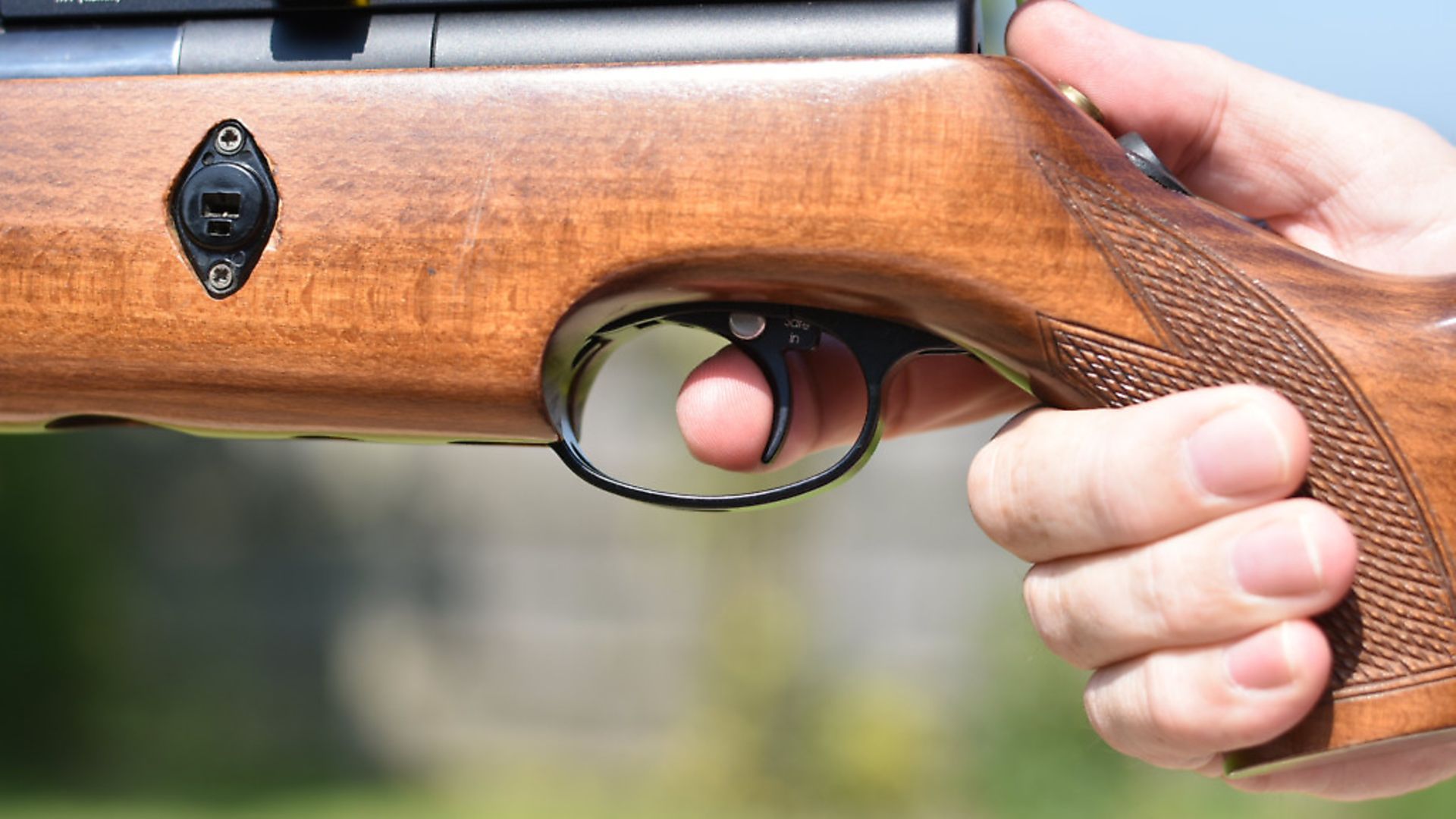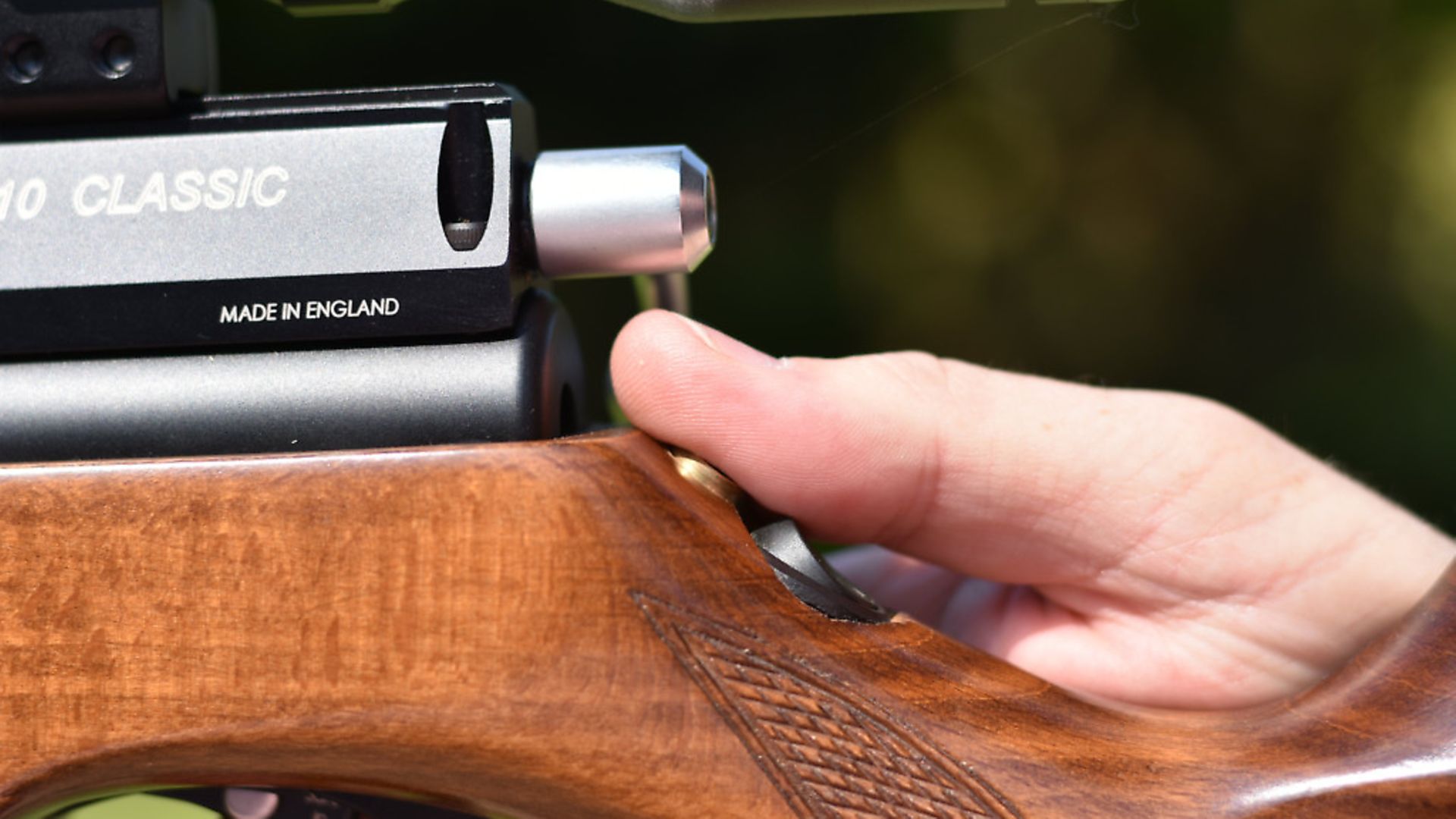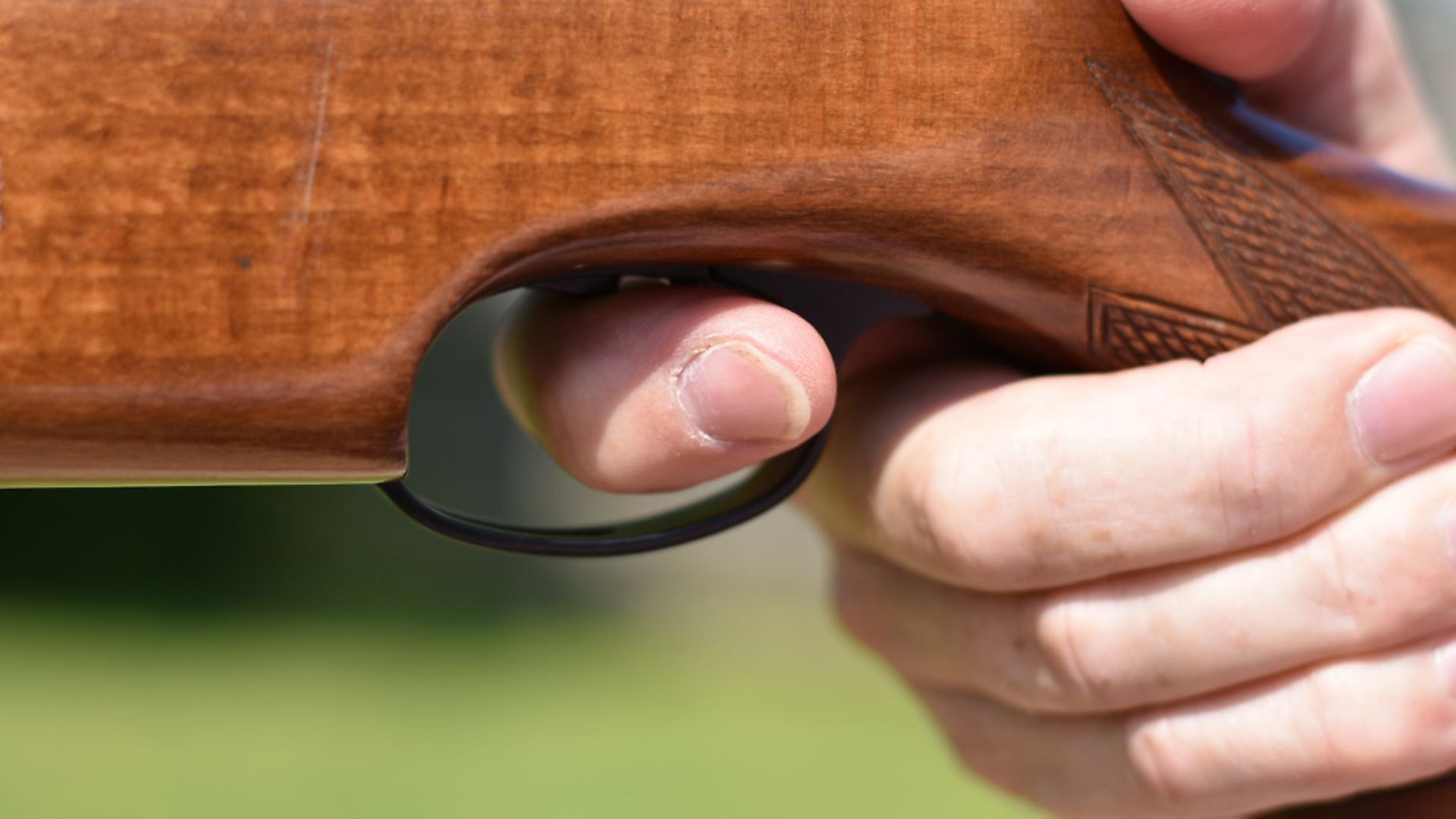As ever, the editor is looking to improve his accuracy – this time its trigger control
 credit: Archant
credit: Archant
Over my long airgun shooting career, I’ve searched relentlessly for anything that makes me a better shot, by which I mean a more successful and productive hunter. I’ve often taken inspiration from the competition crowd, because they’re even more obsessive than I am in trying to find even the smallest improvement. Dave Brailsford, who is the mega-brain behind the quite incredible success of British cycling, coined a phrase, ‘the aggregation of marginal gains’. He taught people that each and every improvement, no matter how small, was worth pursuing; wheels, tyres, diet, sleep, helmets, shoes, drinks, pedals and clothing all went under the microscope, and any improvement, no matter how small, was adopted in their quest for Olympic gold medals. Today, Great Britain is seen as one of the powerhouses of world-class cycling, whereas 15 years ago we were plucky amateurs, forever destined to be humiliated by the big European nations who had dominated cycling forever.
Not so good
In recent months, I’ve been looking at a marginal gain, which is my trigger control. If you’d asked me last August, ‘how is your trigger movement?’ I’d have said, ‘pretty good’. However, when my shooting buddy videoed my trigger finger with his iPhone during a shot, I suddenly saw so many problems that I’ve been on a mission to address them ever since.
Let’s start on page one. The first thing is that your rifle must fit you. It’s no good giving a short and super-light BSA Ultra to a 6’ 4” rugby player. He’d be better served by big long heavy rifles that suit his build. Similarly, from my lofty 5’ 9”, I don’t want a 12lb rig with a 15½” pull length. Find a rifle that suits your build and you’ll have laid a good foundation to top-class accuracy.
Next, we come to trigger control. Let’s assume you’ve learned good technique and can hold well enough for a good, precise shot. What comes next will make or break the deal. If you wrap your finger around the trigger blade and rip into it as your sights pass the target, I have bad news for you. You just missed.
 credit: Archant
credit: Archant
Relaxed control
Your trigger hand should be as relaxed as possible and never, ever play any part in steering the rifle. It has one job and one job alone, and that’s to release the shot. Like many modern airgun shooters, I use the ‘thumb up’ position. This is where the trigger hand thumb rests as it falls on the top of the pistol grip, with no attempt being made to grip the stock. This eliminates the tension that can be formed in the hand if the thumb wraps around the stock, or if pressure is applied through it.
Next, the pad, and only the pad, of your trigger finger should press the trigger blade directly backwards, in line with the barrel’s bore. Any pressure to the left or right is unwelcome. Remember that the trigger breaking happens before the rifle fires, and if you pull the gun around before the pellet leaves, then you’ll never attain your full potential as a shooter.
Even then, please don’t think this trigger action business is over. I have a failing in my technique which is surprisingly common. As the trigger breaks, I flick my index finger forward again. This serves no purpose at all and adds yet another movement in the rifle before the pellet leaves the barrel.
 credit: Archant
credit: Archant
Light pressure
The correct technique is to maintain finger pressure lightly on the trigger blade after the shot fires. Watch the pellet strike, and only then breathe and release your pressure on the blade. This takes practice and patience, but believe me, it’s absolutely worth the effort. This is a key component of the much fabled follow-though. Follow-through means that after the shot releases, you do just one thing, and that’s absolutely nothing. Don’t release the trigger. Don’t lift your head. Don’t breathe. Just stay completely still.
Your mind should have just one goal; to observe your pellet striking its target. If you feel the trigger break and do nothing until you see that rabbit drop or the knock-down target fall, you’ll have done a good job. Less is more in the world of trigger control, and my strongest advice is to get out and practise. Feel and learn how your rifle and trigger work, and develop the timing to extract their full potential. Do this and you’ll have taken a big step toward becoming a Zen master in the art of airgunning!
__________________________________________________
Read more advice on shooting accuracy...
Choosing the perfect gun for hunting
Are you shooting from the right range?
Is target shooting the sport for you?